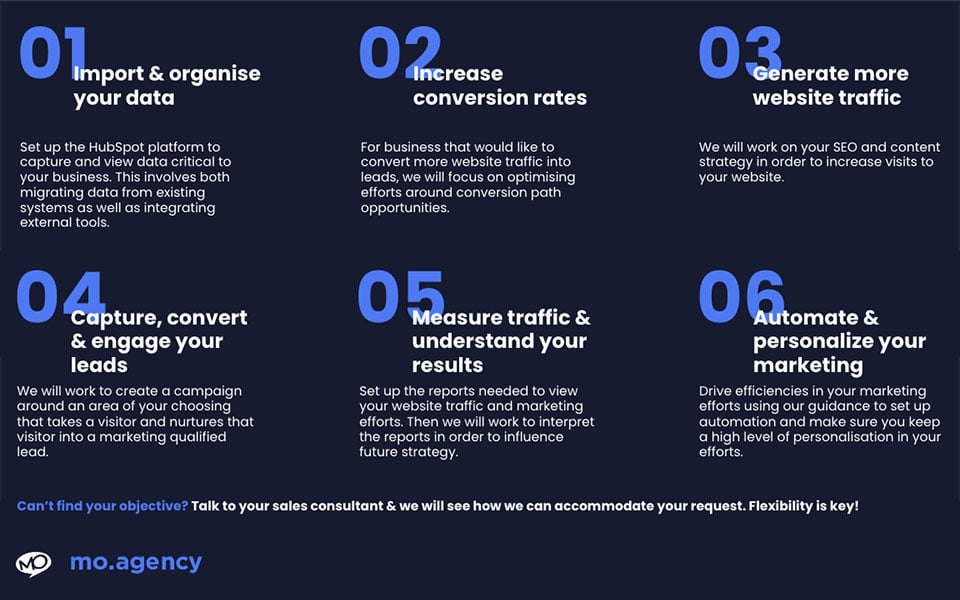Intro
Onboarding, the process by which new users become acquainted with a product or service, has undergone significant change. Traditionally, regardless of individual user needs or objectives, it involved a standard set of introductory steps. However, as the digital landscape has evolved, so have customers' expectations and needs, prompting a shift towards a more personalised approach.
Enter Objectives-based Onboarding: a strategy that aligns the onboarding experience with specific customer objectives, ensuring each interaction is tailored to their needs.
This personalised approach shortens the learning curve and fosters a stronger bond between the user and the product.
What exactly is Objective-based Onboarding?
Objectives-based Onboarding is a customer-centric approach that tailors the onboarding experience to the new user's specific objectives and outcomes.
Unlike previous one-size-fits-all approaches to onboarding, this strategy recognises that each customer has unique needs and sets out to meet them from the start.
The shift from a generic to a personalised onboarding experience is a response to the increasing complexity of products, as well as the diversity of user expertise and expectations. Initial goal-setting conversations, the creation of personalised learning paths, and regular check-ins to ensure the onboarding process remains relevant and on track are key components of this approach.
This framework not only assists customers in achieving their short-term goals but also lays the groundwork for long-term success and satisfaction with the product.
Examples of Objectives
Below is a selection of our objectives for our HubSpot Marketing Hub onboarding.

The Importance of Objectives-based Onboarding
Understanding the customer is the cornerstone of Objectives-based Onboarding. By learning about each customer's objectives, onboarding can be tailored to meet them, resulting in a more engaging and relevant experience. This personalised journey is critical in lowering churn; we’ve seen that our customers are more likely to stick with HubSpot when they see their objectives being met.
Furthermore, by establishing a sense of accomplishment and satisfaction early on, this approach directly impacts the success of HubSpot in the organisation. Our customers are more likely to use a product to its full potential when guided through features and functionalities that align with their objectives. This increases the product's perceived value.
The link between a well-executed onboarding process and product value realisation is obvious: when customers understand how to use the product in the context of their own objectives, they are more likely to integrate it into their daily operations, resulting in long-term loyalty and success.
Why Objectives-based Onboarding is the Future
Objectives-based Onboarding is the way of the future because it uses data-driven decisions to tailor the onboarding process, ensuring each customer has the most effective and efficient experience possible. By analysing customer data, businesses can set precise onboarding objectives that resonate with individual needs and preferences.
Success stories from companies that have used Objectives-based Onboarding demonstrate its effectiveness. These real-world examples frequently emphasise lower churn rates of HubSpot software, higher customer satisfaction, and faster time-to-value, demonstrating the tangible benefits of this approach.
Furthermore, Objectives-based Onboarding aligns with modern customer expectations for personalised experiences. Customers today expect services that are tailored to their specific needs and objectives. By exceeding these expectations, objectives-based Onboarding improves customer satisfaction and establishes a new standard for digital customer engagement. This alignment with customer expectations is a forward-thinking strategy that anticipates and shapes the future of customer service and success, not just a reaction to current trends.
How to Implement Objectives-based Onboarding
Setting clear, measurable objectives with our onboarding customers is the first step in implementing objectives-based Onboarding. These objectives should be specific, attainable, and tailored to the customer's specific needs, serving as a road map for the onboarding process.
It is important to develop a structured but agile framework. This entails creating a core onboarding process with key milestones and educational resources, but also allowing for customisation based on individual customer objectives.
Leveraging technology and tools is a critical component of a modern onboarding strategy. We use HubSpot Tickets, HubSpot Tasks, HubSpot Projects, e-learning platforms, and project management software to track progress and coordinate tasks. These tools automate parts of the onboarding process, provide valuable data insights, and facilitate communication, ensuring an efficient and personalised onboarding experience.
Best Practices for Objectives-based Onboarding
Continuous improvement is the lifeblood of Objectives-based Onboarding. Creating feedback loops with customers enables insight collection that can be used to improve the onboarding process. This ensures the approach evolves and adapts to meet user needs and feedback.
A cohesive onboarding experience requires cross-departmental collaboration. To ensure that our customer's objectives are understood and met throughout their journey, the sales, marketing, and customer service teams should have aligned objectives and open communication channels.
Measuring success is essential in Objectives-based Onboarding. Critical metrics include customer satisfaction scores, time to first value, and user engagement. These KPIs aid in evaluating the effectiveness of the onboarding process and identifying areas for improvement, ensuring that the onboarding experience is always in sync with business objectives.
Considerations and Potential Challenges
In Objectives-based Onboarding, balancing customisation and scalability presents a significant challenge. As a company gets deeper into the onboarding process, we uncover opportunities for HubSpot software to solve additional problems in the organisation.
In these very common cases, our Customer Success Manager and HubSpot Pros must balance requirements for 'more' with the original objectives. Scope creep in the project and personalising the onboarding experience for each customer can put a strain on resources.
To address this, businesses must stick to the original objective of the onboarding. The original objectives should be implemented to completion, but with scalable processes that allow for expansion at a later stage. Full completion of pre-defined objectives sets the tone for future objectives for our customers by demonstrating the value of outlining a problem and solving it to its full completion before moving on to the next problem.
Another critical consideration is resource allocation. Objectives-based Onboarding necessitates a significant investment of time and resources to be effective. This initial investment is critical for long-term success because it ensures our customer's onboarding team take HubSpot forward once onboarding is completed. Ideally, our customers can run HubSpot without our assistance after successful onboarding. We have repeatedly seen that the personalised experience we aim to provide aligns with our customer's objectives and results in higher satisfaction and retention of HubSpot software.
The Wrap
Objectives-based Onboarding represents a paradigm shift from a one-size-fits-all approach to a personalised strategy that aligns with individual customer objectives. This evolution in onboarding is more than just a trend; it is a reaction to the need for greater customer engagement and satisfaction. At MO Agency, we've implemented an onboarding process that educates and empowers our customers by setting clear objectives, developing a flexible framework, and leveraging the right tools.
The importance of Objectives-based Onboarding in promoting customer success and driving business growth cannot be overstated. It has an immediate impact on our customer retention, HubSpot product adoption, and, ultimately, both company's bottom lines.






